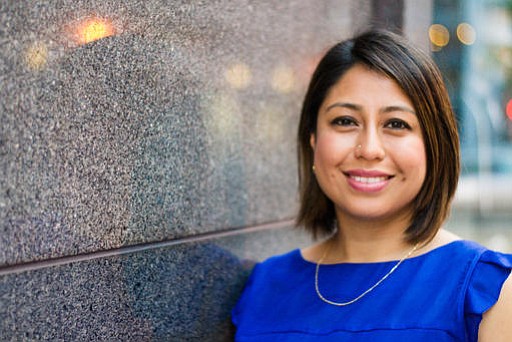Independent review slated of Charlottesville events
Free Press staff, wire reports | 9/1/2017, 7:29 a.m.
CHARLOTTESVILLE
More than 200 clergy, activists and citizens began a 10-day march this week from Emancipation Park in Charlottesville to Washington in a public show of resistance to the white supremacists who brought violence and death to the city earlier this month.
The march began Monday and is expected to end at the U.S. Capitol on Wednesday, Sept. 6.
“We’re marching to defeat white supremacists and to build a society where every one of us can be safe and thrive,” said Cristina Jiménez of United We Dream, one of the organizers.
Ms. Jiménez and others said the marchers are going Washington to demand that U.S. leaders, including President Trump, stop providing aid and comfort to white supremacists and stand up for diversity and democratic values.
The trek is just one sign of the fallout from the Aug. 12 white supremacist rally that left three dead and scores injured.
Another sign is the action of Gov. Terry McAuliffe in response to the violence in Charlottesville. He established a task force to focus on preparedness for civil unrest and future rallies of groups with a propensity for violence.
Brian Moran, state secretary of public safety and homeland security, is to chair the group that will review current planning and recommend changes.
Gov. McAuliffe also created the Commonwealth Commission on Diversity, Equity and Inclusion to look into the root causes of the racism and bigotry promoted by white supremacists and to recommend ways to improve diversity and inclusion in Virginia.
City officials announced Aug. 25 that a former U.S. attorney would conduct an independent review of the city’s response to the Aug. 12 event and two prior white nationalist rallies. That process is expected to take months.
The march began a day after Charlottesville residents vented their feelings about the violence at an emotional community meeting with city leaders. The Charlottesville City Council hosted the event with support from the U.S. Department of Justice’s Community Relations Service.
Hundreds of people turned out to speak about the impact of the Aug. 12 white nationalist rally held to defend a statue of Confederate Robert E. Lee. Many people also expressed dissatisfaction with the way officials handled the rally and the violence that unfolded. For more than three hours, residents told officials that the white supremacist event and violence left them fearful, depressed and worried for their children.
Typical was Louisa Candelario, whose voice rose as she addressed the residents and city leaders. She said she was just feet from 32-year-old Heather Heyer, a Charlottesville paralegal, who was killed when a neo-Nazi rammed his car into a crowd of people who turned out to oppose the white supremacists.
“I’m very nervous right now. I’m scared for everybody, for my community,” she said.
Speakers also accused the police and city officials of failing to protect them. Some called for resignations.
“I’m going to ask the (police) chief, the city manager, the mayor: Is this the best you can do?” said Charlottesville resident Jim Baker, who drew enthusiastic applause. “The city is crying out for leadership. You can hear that cry ringing through the pained responses of everybody in this room. And you are coming up weak.”
Suzanne Buchanan, a Justice Department conciliation specialist, told the crowd the meeting was about “moving forward” and stressed that it wasn’t a place where they would get “all the answers to your questions.”
“We’re here to understand what the underlying issues are and how we can resolve them,” she said.
But Don Gathers told Ms. Buchanan the people in the room couldn’t trust her because they don’t trust U.S. Attorney General Jeff Sessions or President Trump.
“The city is hurting, and I’m not sure exactly how the healing trickles down from D.C., but we need answers,” Mr. Gathers said.
Charlottesville has sought to reduce tensions by shrouding Confederate statues of Lee and Stonewall Jackson with black tarps as a sign of mourning for Ms. Heyer.
The shrouds were placed on Wednesday, Aug. 23, but the tarp over the Lee statue has had to be replaced three times since after statue supporters have cut or removed them.
City and state authorities were criticized during the meeting by people who questioned why authorities didn’t do more to separate opposing forces and step in once violence broke out and people were injured.
Gov. McAuliffe, Charlottesville Police Chief Al Thomas and other state and local officials have defended the law enforcement response, saying police had to show restraint because some people in the crowd were heavily armed.
Chief Thomas, who was at the session and did not speak, also said the white nationalists didn’t comply with security arrangements, but he has yet to explain why State Police and local officers were held back when the two sides converged at Emancipation Park.
Some speakers said the rally showed the need for stricter gun control measures and a reconsideration of how to balance free speech and public safety.
African-American speakers said racism, while on heightened display that day, had long been an issue in Charlottesville. They cited issues such as a dearth of affordable housing and what they said was lack of trust between the community and police.
Dorenda Johnson directly addressed Chief Thomas and City Manager Maurice Jones, who sat quietly next to one another.
“What now?” she asked. “What on Earth are you going to do now?”
Mr. Jones said after the meeting that he understood people had a lot of questions for their city government and state government. He urged patience while a review of the city’s response to the rally is undertaken.
“We are going to be on the path of recovery soon,” Mr. Jones said.







